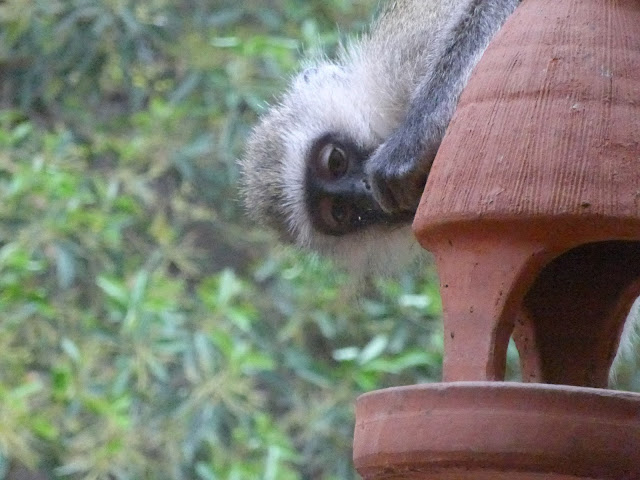Posted by Evan [with added notes from Doug]
[On Mashujaa Day, a Kenyan holiday, we headed up into the high Aberdares with some friends to camp. We enjoyed the wonderful company of the Carpenter and Hostetter/Siegrist families, friends of ours that live in Nairobi also, going up into the subalpine area of Kenya to camp for 2 nights was a great retreat from city life. We camped at the Reedbuck campground, on the way up going through the beautiful Salient forest, and then on the way back coming the quicker way down the eastern edge of the range. (
googlemaps route)
The Aberdares are mountains north of Kenya that have excellent forest and subalpine areas, rising to around 13000 feet. The area was known as a center of Mau Mau activity in the 1950's. We didn't plan it specifically, but Mashujaa Day is "heroes" day in Swahili, the day for celebrating those that fought for Kenyan independence. (see
Radiolab's episode for a very interesting story about the Mau Mau period.]
 |
| Blue Minkey |
[Blue Monkey is otherwise known here as the Sykes Monkey. We've been enjoying the many primates that we see!]
 |
| Rogue Bushbuck |
[Bushbuck were common in the area, one of the many beautiful ungulates we see in Kenya! Every time we go out in Kenya we see new kinds of antelopes and such! The bushbuck were fearless, roaming around our campsite]
 |
| Fisi (Hyena) Feces |
[We don't see some of the species around, but see their evidence. Here is evidence of the hyenas in the area, mostly fur left over from its prey]
 |
| Evil Safari Ants |
[Safari ants are very painful to get into, so we keep a close lookout for them]
 |
Reid, Alex, Sam, Evan, and Liesl
|
[The kids on the trip had a great time together. Here at an overlook for waterfalls]
 |
| Karuru Falls |
[The upper falls, about 300 meters. There are middle and lower falls, also 300 to 400 meters each]
 |
| Falls with a cave below where the Mau Mau hid |
 |
| Campsite |
[Our campsite, during a rare sunny period. The area is shrouded in mist and fog most of the time, but cleared at brief times. ]
 |
| Effulgent Ephalunt!! |
[We looked all weekend for the elephants that inhabit the forests. Finally on the drive out we spotted some - our first spotting of elephants here in Kenya!]
 |
| Misty Mountains |
 |
| Male Waterbuck |



















































